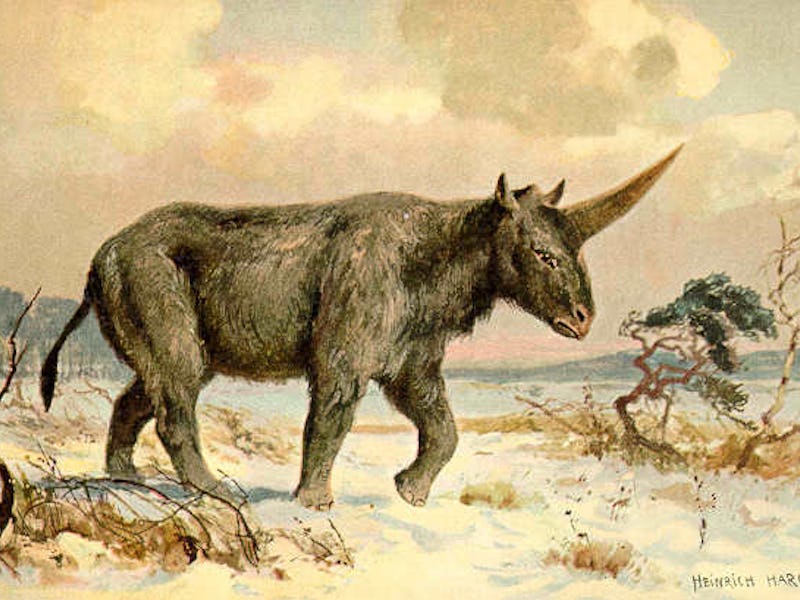The Siberian Unicorn Isn't a Unicorn and It Has Nothing to Do With Folklore
Elasmotherium sibiricum is younger than we thought but we don't know if it inspired fairy tales.

The ancient rhinoceros Elasmotherium sibiricum — or more colloquially, the Siberian unicorn — was a shaggy giant mammal with strangely slender legs and a single horn. Despite what you may read today in various newspapers of note, it was unicorn in the same way that a seahorse is a mustang, which is to say not at all. Elasmotherium was not a unicorn because real unicorns don’t exist and there is no reason to believe they ever did. Sure, a new study that radiocarbon dated an Elasmotherium skull fragment argues that the rhino lived much later than thought. It does not mean that Elasmotherium coexisted with humans or that the myth of the unicorn started in Siberia, because it didn’t.
What actually happened was a team of Russian paleontologists, who published their research in the American Journal of Applied Sciences in February, analyzed a rhino skull fragment found in northeast Kazakhstan. For a long time, scientists believed that the last Siberian unicorn died 350,000 years ago; this study indicates a pocket of the rhinos survived, making it up to about 27,000 B.C. Which, fine, whatever. That’s cool! They got to roam the earth a few hundred thousand years longer. Though there’s evidence that humans could have been around — we’d made it to Siberia 27,000 years ago — the study does not address this.
Perhaps an argument could be made that some fossilized Elasmotherium skulls begat the unicorn myth, just as there might be dragons in a dinosaur fossil bed. Cool. But you’ll also have to square that with the reality that Western culture’s unicorn craze wouldn’t really hit its stride until the Middle Ages, when unicorns became a symbol of innocence and Jesus.
The closest rhino-unicorn link was Marco Polo’s account of a Javan rhinoceros, which he called a unicorn because he didn’t know what else it was. But Polo didn’t invent unicorns — a mistranslation of Hebrew re’em, a one-horned creature (perhaps an auroch), became monokeros in Greek, unicornos in Latin, and finally, plain “unicorn” in the King James Bible.
Enter the narwhal: Ancient Europeans saw the tusks and went nuts, exemplified by the Throne Chair of Denmark — all narwhal. The Siberian unicorn was a real beast, but we don’t really know if it played a role in fantasy. Resist the urge to sex up Lisa Frank iconography by giving it a gritty origin story.